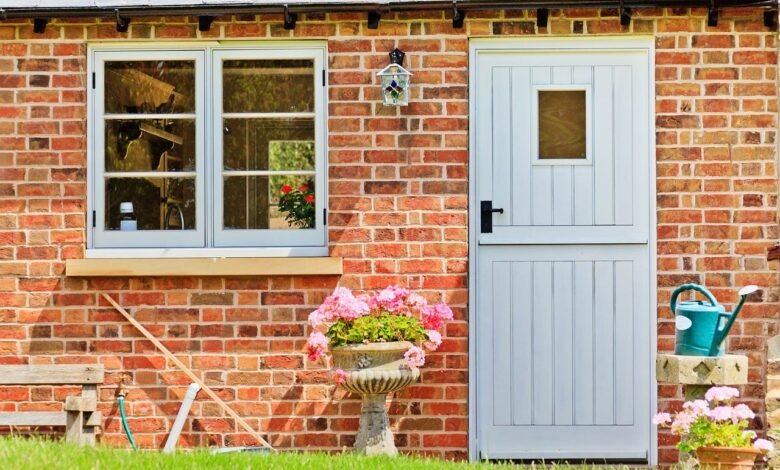What’s The Latest With UK Mortgage Rates? – Forbes Advisor UK

The Bank of England held its Bank Rate at 5.25% on 21 March, as was widely expected. It’s the fifth time in a row the Rate has been frozen since it rose to its current level in August last year.
The Rate had previously undergone 14 consecutive rises (between December 2021, when it stood at just 0.1%, and last August). The next interest rate announcement will be on 9 May 2024.
The plateau in interest rates has largely been made possible by cooling inflation. The latest figures from the Office for National Statistics show that inflation fell from 4% in January to 3.4% in February. As recently as last September, the figure was 6.7%.
But experts reckon that even this steep fall to 3.4% may not be sufficient to trigger the Bank of England to cut its Bank rate – which helps determine mortgage rates – until the summer.
Interest rate cycle
Mortgage costs initially rocketed in the autumn of 2022 after former Prime Minister Liz Truss’ mini-Budget triggered market uncertainty and sent the pound crashing to historic lows. It caused mortgage lenders across the board to hastily pull deals, bringing them back to market at much higher prices.
While mortgage costs then underwent a downwards correction, in the spring of 2023 lenders began putting up the cost of deals again as Bank Rate continued on its relentless climb in the face of soaring inflation.
As inflation cooled and interest rates remained flat, the cost of fixed rate mortgages fell from its peak. Major lenders trimmed mortgage costs across the board, with the leading five-year fixes falling under 4%. However, lenders repriced upwards again when it looked like inflation’s downward trajectory had stalled, with the cheapest deals in the most recent spate of cuts disappearing.
Average cost of popular deals
So how much can borrowers expect to pay overall?
Rates vary according to lender and deposit size, but according to our mortgage partner Better.co.uk, the average cost of a two-year fixed rate mortgage across all borrower types* today stands at 5.05%. The average cost of three-year fixed rate deals average 4.76%, while five-year fixed rate costs average 4.78%.
The leading two- and three-year deals today are priced at 4.51% and 4.44% respectively, with the best five-year deal at 4.24%.
The average two-year tracker rate mortgage is priced at 5.84%, with the best in this category priced at 5.40%.
The typical standard variable rate (SVR) stand at 7.76% today, according to Better.co.uk. It compares to just 4.75% in July 2022. The SVR is usually what borrowers revert to once their deal, such as a fix or tracker, has expired. You can get up-to-speed with what might happen to mortgage rates this year with our 2024 forecast round up.
In terms of mortgage availability, as of 1 March, there were 6,004 residential mortgage deals on the market, according to data provider, Moneyfacts. This compares to 5,787 on 1 February.
Interest rates and mortgages
When the Bank Rate rises or falls, it has an effect on the cost of mortgages.
There are more than a million homeowners (according trade body, UK Finance) on variable rate deals, such as trackers, whose payment will immediately either rise or fall if Bank Rate is adjusted.
If Bank Rate rose by 0.25 percentage points for example, a tracker deal priced at 5% would rise to 5.25%. This increase would add an extra £30 a month on a £200,000 loan taken over 25 years, with monthly repayments rising from £1,128 to £1,258.
Borrowers on fixed-rate deals, where the interest rate is locked are sheltered from changes to the Bank Rate. However, when their deal expires – as will be the case for around 1.6 million borrowers in 2024 – new deals available are likely to be more expensive.
You can work out the monthly cost of a mortgage against various interest rates with our Mortgage Calculator.
What’s happening with house prices?
The signs are increasingly positive. According to the latest house price report from Rightmove, asking prices in March are 1.5% higher compared to February. It’s the largest monthly hike in 10 months and greater than the 1% historic average for March. Homes listed for sale on Rightmove are now priced at an average £368,118.
Lenders are also reporting a rising market. Halifax’s house price report (published 7 March) found that average property prices in February were 1.7% higher than a year ago, although this is slightly lower than the 2.3% recorded in January. On a monthly basis, prices rose by 0.4%, taking the cost of the average home in February to £291,699.
Nationwide’s house price report (published1 March) found that house prices increased by 1.2% in the 12 months to February. On a monthly basis, average property values rose by 0.7%, which is the same increase posted in January. The mutual lender puts the cost of the average home in February at £260,420.
Why had interest rates been rising?
The Bank’s MPC uses interest hikes as a means of cooling the economy and taming rising inflation. The government’s target for the Bank of England is 2%.
The Consumer Prices Index (CPI) measure of inflation stood at 3.4% in the 12 months to February. This compares to a peak of 11.1% back in October 2022 – but is still much higher than the Bank’s target.
One of the main drivers behind recent inflation rises had been the rising cost of energy. However, this has fallen from its peak.
Energy regulator Ofgem’s energy price cap (effective from 1 January 2024) now stands at £1,928. The cap was as high as £4,279 in the first quarter of 2023 (although government intervention had applied a temporary ceiling of £2,500). Ofgem has confirmed that the cap will fall by more than 12% in the second quarter of 2024 (from 1 April) from its current £1,928 to £1,690.
The energy price cap is the quarterly figure that represents the annual bill of a typical household paying monthly by direct debit (although actual bills are always determined by consumption).
What mortgage deals are available?
Keeping track of mortgage costs is challenging – especially when rates can change on a daily basis. One simple way is use our mortgage tables, powered by Better.co.uk.
To find out what deals are available at today’s rates for the kind of mortgage you’re after, you’ll need to enter your personal criteria into the table below. Here’s what to do:
- Select whether the mortgage is to fund a house purchase or if it’s a remortgage for an existing property
- Enter the property value and the mortgage amount you require. This will automatically generate a percentage which is known as your ‘loan to value’. The lower your loan to value, the cheaper the mortgage rates available
- Tick the relevant box if it’s a buy-to-let or interest-only mortgage (you’ll need a repayment strategy in place for these deals), or if you’re looking for a mortgage to fund a shared ownership property
- Finally, filter your search by the type of mortgage you want, for example a two- or five-year fix or tracker. The filter is set to a complete mortgage term of 25 years but you can change this if required.
Here’s a live table of the mortgage deals available today.
What else do I need to know?
Mortgage deals offering the cheapest rates usually come with fees attached. You can opt to pay these upfront or add them to the loan. To factor in the cost of the fee, order your the results by ‘initial period cost’ (in the ‘sorted by’ dropdown).
Alternatively, you can order results by initial rate, lowest fee or monthly repayment – even by the lender’s ‘follow on’ rate that the deal will revert to at the end of the term.
The very cheapest are reserved for bigger deposit amounts, usually of 60% of the property value or more. And, in all cases, you will need a sufficient income and clean credit history to be accepted for a mortgage.
If you want to see what your monthly mortgage payments might look like in different scenarios while overlaid with household bills, our Mortgage Calculator will crunch the numbers.
When can I start a remortgage?
Once issued, mortgage offers tend to be valid for six months, although some lenders honour offers for up to 12 months. If you are looking to remortgage your current home, this means you can lock in a rate today – at no cost and with no strings attached.
How are average mortgage costs calculated?
*Average mortgage costs can vary between sources depending on how the data is gathered. Better.co.uk’s data refers to the average cost of a fixed rate mortgage recommendation that is created and issued to applicants over the last seven days from its panel of over 100 lenders.
The data counts remortgage and purchase loans but excludes SVRs, adverse credit, self-build and shared ownership. Data is collected at the end of each business day.
Better.co.uk targets applicants with a good credit history. Lower loan-to-values (under 85%) account for a significant portion of its business which can translate into cheaper loan rates.
Its average fixed rate costs may therefore appear lower than some others quoted on the market.
Source link





